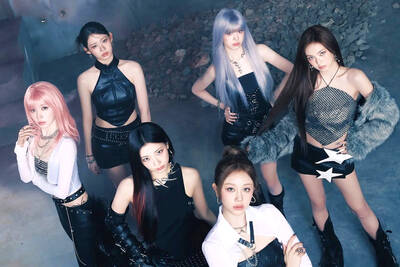Pygmy hippopotamus “Hsiao-chu” has become a mother. Last year on Dec 15, the five-year-old “Hsiao-chu” gave birth to her first child at Taipei Zoo. The baby was given the name “Chu-chang,” which is a play on the character “chang” which means both “eldest” and “grow” in Chinese, as the hippo is not only Hsiao-chu’s eldest son, but the zoo also hopes the baby will grow up safe and sound. The now two-month-old Chu-chang has already grown from his initial birth weight of 5.23kg to a stable 10.4kg. He loves to play in the water with his mother.
The zoo says that on the day Hsiao-chu gave birth, zookeepers observed a slight inflammation on her external genitalia and noticed that she was also paying no attention to her other half. Hsiao-chu lay down outside to rest by herself and completely ignored the calls of zookeepers; they therefore left Hsiao-chu alone inside her house and waited for her to give birth. As expected, at 7:30pm that evening Hsiao-chu gave birth to Chu-chang.
Although Hsiao-chu is a new mother, she appears to be a natural mother. Whenever a zookeeper comes close, Hsiao-chu will block the way between Chu-chang and the zookeeper and even rush forward in an intimidating way, displaying a limitless and natural instinct to protect her precious baby. However, the newly-born Chu-chang spends most of his time asleep and, since the weather has again turned cold, zookeepers continue to spread straw on the floor of the delivery room and have also turned on heating equipment.

Photo courtesy of Taipei Zoo
照片:台北市立動物園提供
The zoo says Chu-chang, who is growing, loves to play in the water with his mother during fine weather and he has already learnt how to swim, hold his breath underwater and can even take his mother’s milk while in the water. You can often see mother and son nestled against each other within the water.
(Liberty Times, translated by Edward Jones)
侏儒河馬「小侏」當媽媽了!去年十二月十五日,台北市立動物園五歲的「小侏」產下第一胎,寶寶就取名「侏長」,除了是「小侏」的長子,也希望牠平安長大。兩個月大的「侏長」已經從出生時的五.二三公斤穩定成長到十.四公斤,而且最喜歡跟著媽媽在水中玩耍。
動物園說,「小侏」生產當天,保育員就觀察到牠的外陰部些微紅腫,還撇開另一半,獨自躺在戶外休息,對保育員的呼喚也不理不睬,於是讓牠單獨在室內待產,果然晚上七點半就生下「侏長」。
雖然「小侏」是新手媽媽,但似乎具備了天生的母性,每當保育員靠近,「小侏」就會擋在保育員和「侏長」之間,甚至作勢往前衝威嚇,照顧寶寶的天性表露無遺。不過,剛出生的「侏長」大部分時間都在睡覺,又遇冷天,因此保育員還是在產房地面鋪上乾草,開啟保溫設備。
動物園說,穩定長大的「侏長」好天氣時最喜歡跟著媽媽到水裡玩耍,已經會游泳、閉氣潛水,還會在水中喝奶,常可見母子水中相依偎的畫面。
(自由時報記者謝佳君)

The content recommendation algorithm that powers the online short video platform TikTok has once again come under the spotlight after the app’s Chinese owner ByteDance signed binding agreements to form a joint venture that will hand control of operations of TikTok’s US app to American and global investors, including cloud computing company Oracle. Here is what we know so far about its fate, following the establishment of the joint venture. IS BYTEDANCE CEDING CONTROL? While the creation of this new entity marks a big step toward avoiding a US ban, as well as easing trade and tech-related tensions between Washington and Beijing, there

A: Happy New Year! I can’t believe it’s 2026 already. Where did you count down? B: I went to pop singer A-mei’s Taitung concert yesterday for the New Year’s countdown. How about you? A: I went to rock band Mayday’s Taichung concert yesterday. Going to their New Year’s shows has become a holiday tradition for me. B: Don’t forget, we’re also going to Jolin Tsai’s show tonight. It’s her first perfomance at the Taipei Dome. A: Yeah, that’s right. It’s great to start the year with good friends and good music. A: 新年快樂!我真不敢相信都已經2026年了。你昨天去哪跨年啦? B: 我昨天去了流行天后張惠妹的台東演唱會,還和她一起跨年倒數。那你呢? A:

Prompted by military threats from Russia, Denmark has recently passed a new conscription law, officially including women in its military draft for the first time. From July 1, 2025, Danish women, upon turning 18, will be entered into the draft lottery. If selected, they are to serve in the military for 11 months, just as men do. Not only has this decision attracted international attention, but it has also sparked discussions on gender, equality and national defense. Although Denmark’s reform appears to promote gender equality, it primarily responds to regional instability and the need to strengthen national defense. With

A: Apart from Taiwan’s A-mei, Mayday and Jolin Tsai, there are many foreign singers coming to Taiwan early this year. B: The South Korean girl group Babymonster are playing two shows at Taipei Arena starting from tonight. Who else is coming to Taiwan? A: Other artists include Australian band Air Supply, K-pop superstar Rain, boy group Super Junior, TXT, US singers Giveon and Josh Groban, and Irish boy group Westlife. B: Air Supply was the first foreign band to come to Taiwan in 1983, and they’re probably the most frequently visiting group too. A: As the year is beginning